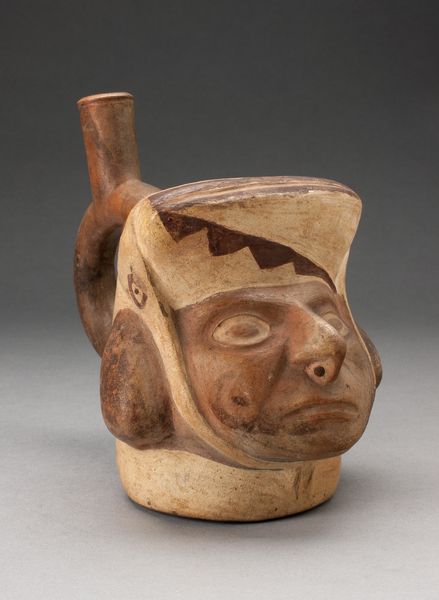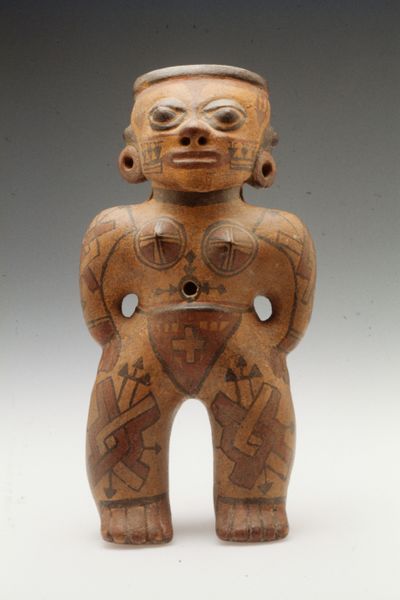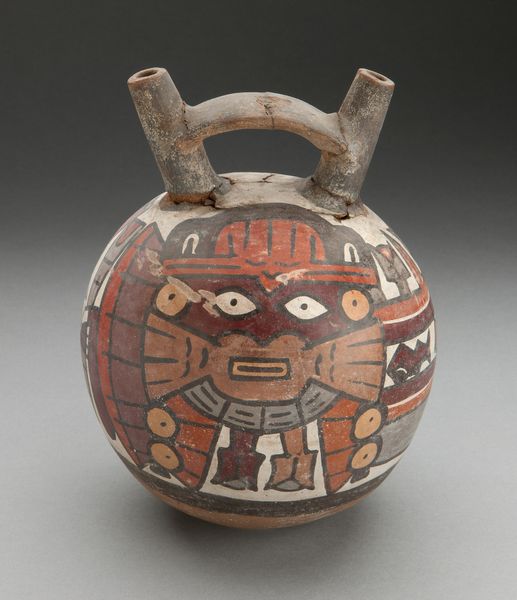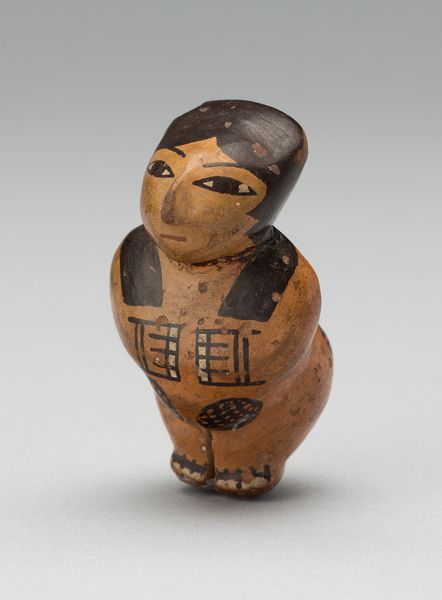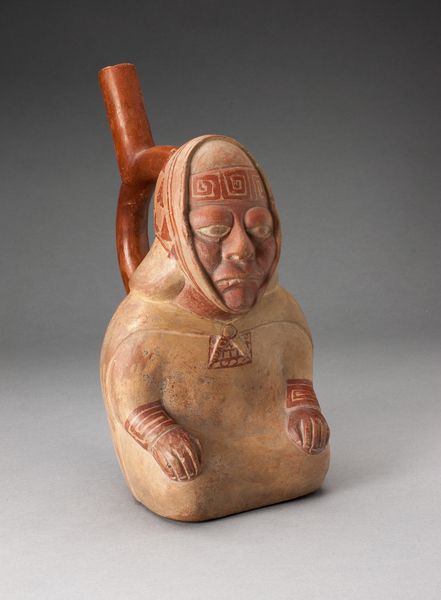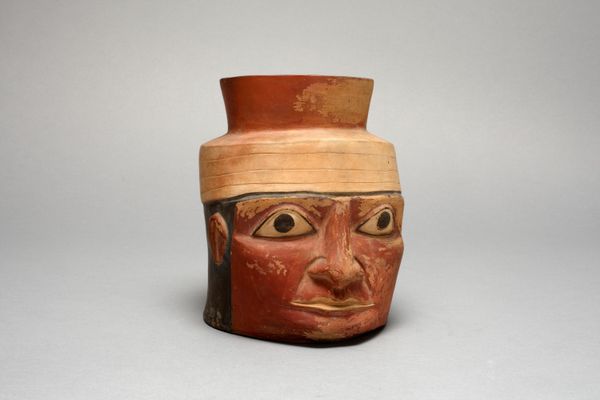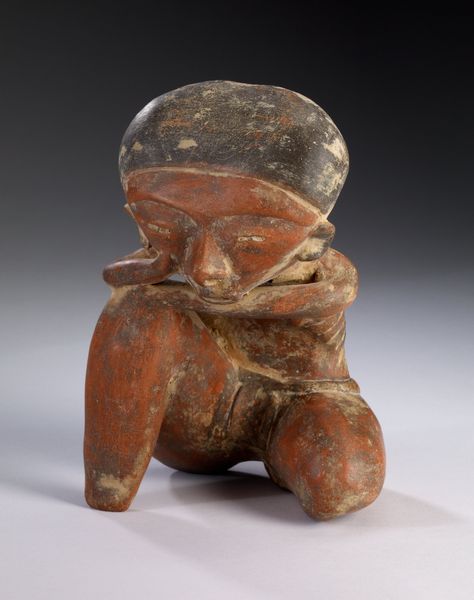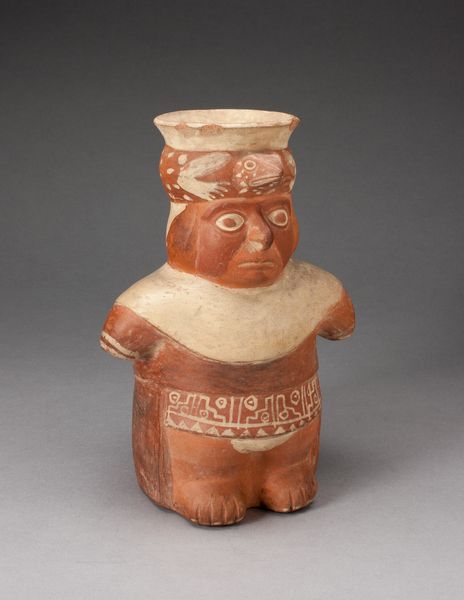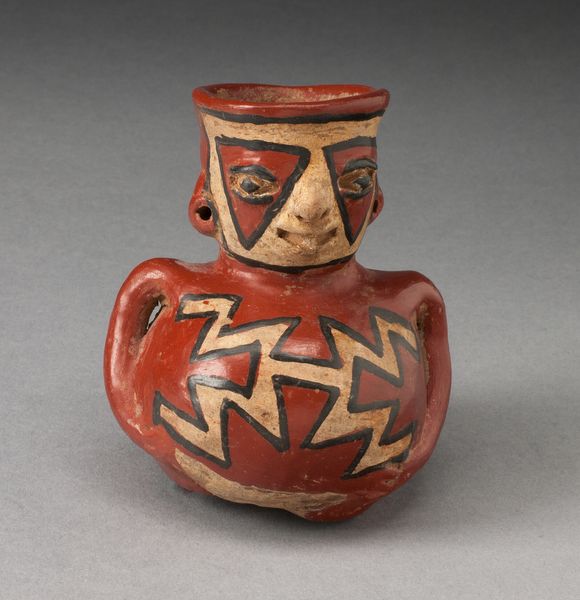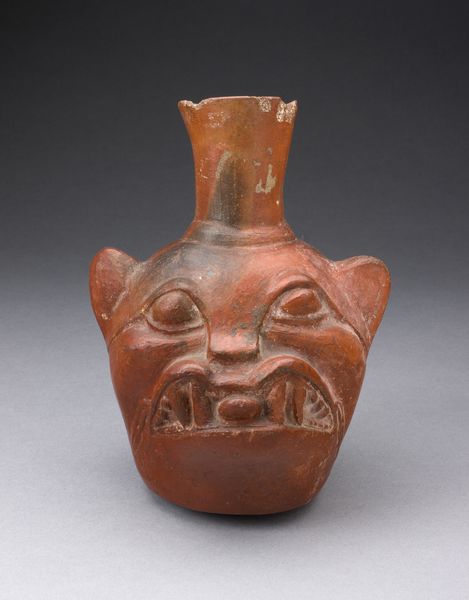
Vessel in the Form of a Seated Figure c. 12th - 13th century
0:00
0:00
ceramic, earthenware, sculpture, terracotta
#
ceramic
#
figuration
#
vessel
#
earthenware
#
geometric
#
sculpture
#
terracotta
#
indigenous-americas
Dimensions: 7 1/4 x 5 9/16 in. (18.4 x 14.1 cm)
Copyright: Public Domain
Curator: Here we have a ceramic piece from Casas Grandes, dating from the 12th or 13th century. It’s called "Vessel in the Form of a Seated Figure" and is a rather striking example of their figural pottery. Editor: The immediate impression is one of grounded solemnity. The way he sits there, contained within the vessel's form. What I notice is how smooth and pale it is. I wonder if they burnished it with something. Curator: The surface is indeed quite smooth, achieving a certain delicacy, which makes the painted designs pop all the more. Pigments were skillfully applied after the ceramic dried and before firing to give him a sacred garment of geometric designs and what seems to be an otherworldly eye. It almost feels like a spiritual protector to me. Editor: It's intriguing to consider how the piece's functionality as a vessel intertwines with its symbolism. These pigments didn't appear on their own, but had to be gathered and extracted from the earth, perhaps even traded for! Imagine the labor invested not just in the creation of the vessel but the paints decorating its facade! Is he guarding a substance inside of himself? And, look closely – aren't the little legs, seemingly ornamental, functional supports for this pot? Curator: Precisely. The body as vessel and the vessel as body are inseparable. It prompts me to reflect on the porous boundary between self and other. Do you notice a sadness in the eyes, the open mouth and almost a childlike vulnerability, an acknowledgement of the fragility of existence perhaps? Editor: You are attuned to its emotional expression! The materials also communicate to me. I consider the process of transforming raw earth into something so deliberately shaped, so evocative. This transformation itself seems profoundly spiritual. Think about the control and skill of the artisan manipulating earth, water, and fire to materialize an idea that lives until today. Curator: Seeing it through that lens of embodied labor deepens my appreciation for its magic and cultural significance. Editor: Absolutely, this blending of function, craft, and meaning provides so much for contemporary audiences to unpack!
Comments
No comments
Be the first to comment and join the conversation on the ultimate creative platform.
